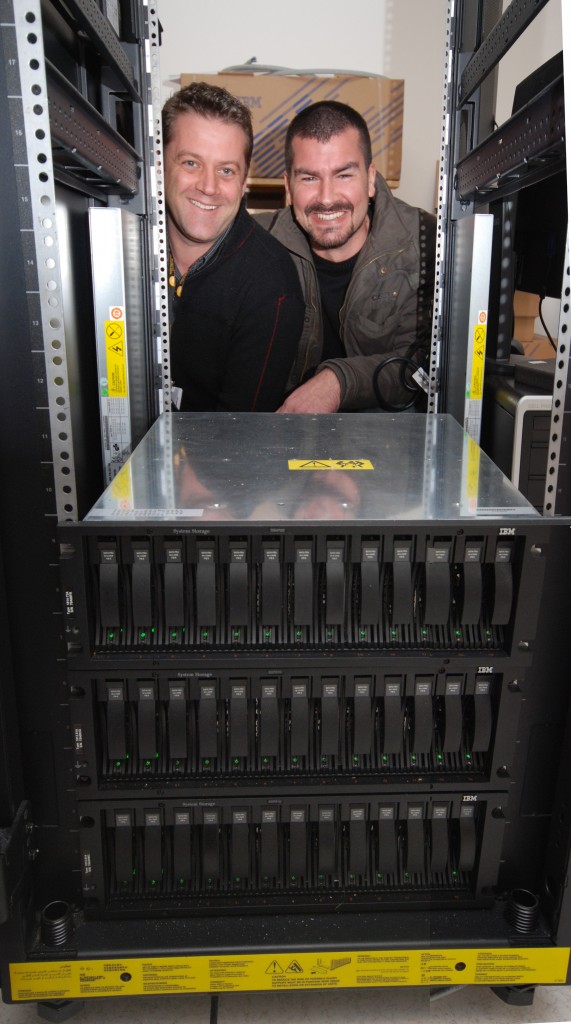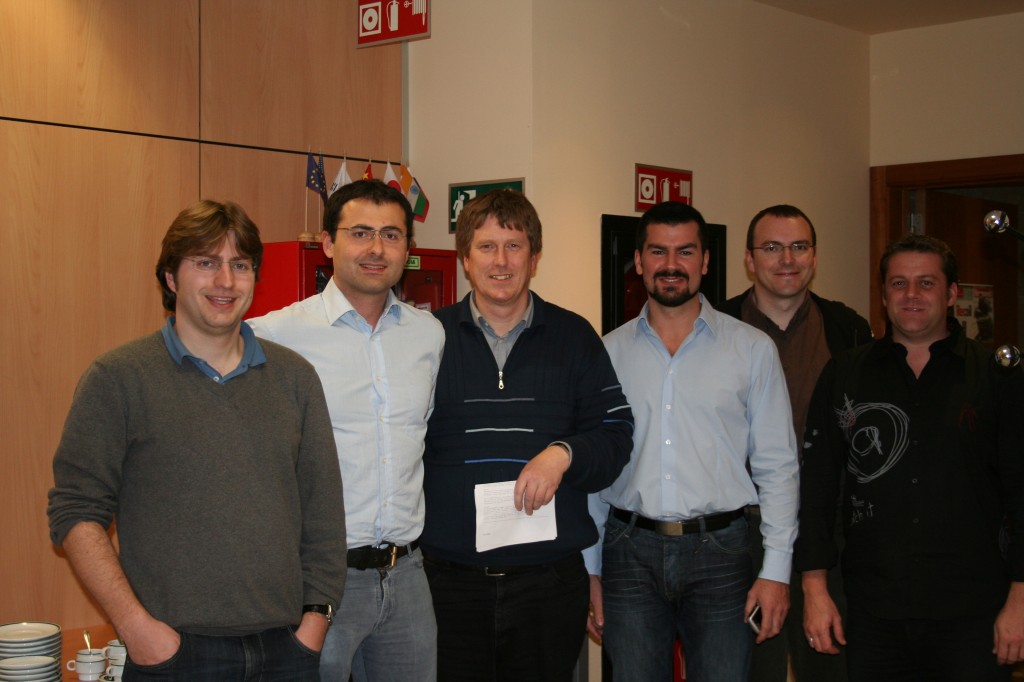ITER NEWSLINE
65
Night voyage to Barcelona
Robert Arnoux
Night voyage to Barcelona

Cédric Chaumette and Jürgen Dirnberger watch over the strategic data produced by ITER.

Mission completed: Cathal Thorne and Thomas Bousios, IT Group Leader for Information Technology at the European Domestic Agency with their ITER colleagues Hans-Werner Bartels, Jürgen Dirnberger, Walter Schiller (F4E) and Cedric Chaumette (from left).
Remote backup, which is operational since the end of December 2008, has been set up by the "Osiatis team"—some ten people within the IT division who are in charge of systems administration and user support.
Remote backup is to ITER what a USB key or a portable disk is to every one of us: a way to make sure that there is always a backup, whatever happens to the original data.
A remote backup though is not just an oversized storage device. It comes with an array of redundant safeguards and controls, both logical and physical, which guarantee that—should a major problem arise here—ITER could be "restarted" from Barcelona and no data would be lost.
With data travelling 60 to 70 times faster than through a standard DSL connection, the whole saving process is usually completed within two to six hours, depending on the amount of data produced over the day.
"Based on experience and projections, we have set up a total storage capacity of 30 terabytes (30,000 gigabytes), with the option to add more disks as ITER grows," says Cedric Chaumette, the Osiatis team leader in charge of the operation.
return to Newsline #65



